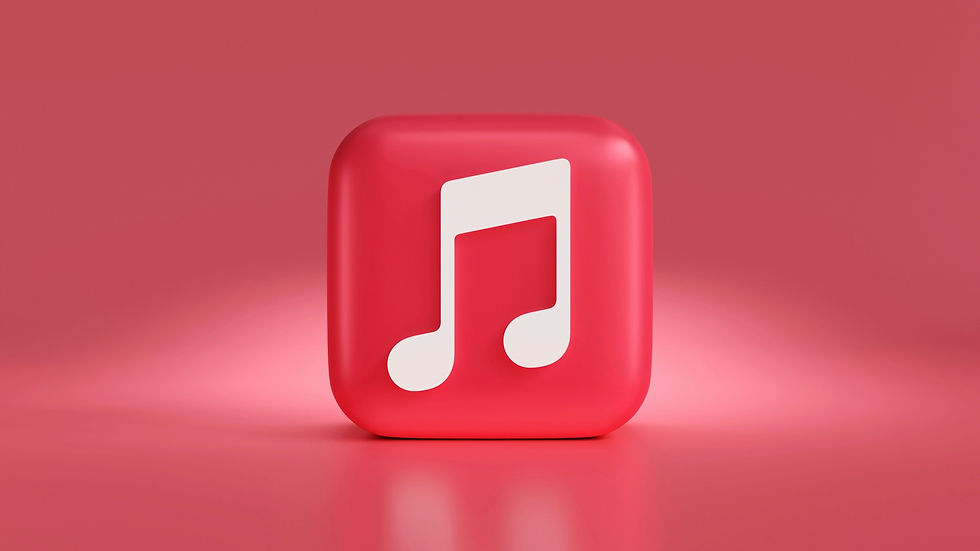How The King Of Pop Outsmarted the Record Labels: A Masterclass in Ownership for Aspiring Artists
- Legendary Mix

- Oct 7, 2024
- 4 min read

Imagine you’re one of the most successful artists on the planet. Your last album has broken records, and your label is ready to pour millions into your next one. Most artists would wait for the budget, let the label handle everything, and take the backseat in production. But what if you could take control, flip the script, and own every piece of the process? This is exactly what Michael Jackson did with his Dangerous album, and the story behind it is a masterclass in ownership and creative control.
For aspiring artists—signed or unsigned—this story will make you think twice about your career and how you can take control of your art and your business.
Setting the Stage: Michael Jackson and the Traditional Record Label System
The late 1980s and early 1990s were a pivotal time for Michael Jackson. Fresh off the massive success of previous albums, Michael’s label, was eager for his next big album. The label set up a meeting to plan Dangerous, proposing a multi-million budget with a start date several months down the line.
In typical fashion, the label was prepared to fund the album, handle production, and ultimately own the music. Michael would do the creative work, but the label would retain control over the masters. This was the industry standard.
But Michael wasn’t just an artist; he was a business visionary. He understood how the label’s involvement meant they would own everything, not just the music that made it to the album but also any unreleased tracks. Michael, however, had a different vision—one where he retained control of his art and creative freedom.
Thinking Outside the Box: Michael’s Bold Move
Instead of waiting for the label’s timeline, Michael decided to take a bold step: he would start working on the album immediately but on his own terms. He recruited Teddy Riley, the hottest producer at the time, known for shaping the New Jack Swing sound. Without involving the label, Michael paid Teddy out of his own pocket—a significant investment of around a million dollars.
He didn’t stop there. Michael personally funded every part of the process. He brought in writers, musicians, and producers, paying everyone himself. This move allowed him to maintain full creative control. Together, Michael and Teddy went into a creative frenzy, recording over 60 songs. And the best part? Because he funded everything, Michael owned all of it.
Delivering the Dangerous Album: A Complete Package
Six months later, when the label was ready to start the album, Michael showed up with a complete project that left the label executives speechless. He didn’t just present a few demos—he delivered 14 professionally mixed and mastered songs, a fully realized album name (Dangerous), a few potential album covers, and a strategic plan for the lead single and music video.
The label had been prepared to spend months working on the project and millions in production costs. But the King Of Pop had already done the work—and spent his own money to do it. The $10 million budget the label had set aside? It became more of a reimbursement for Michael. He had not only retained creative control but also made a financial profit.
For artists today, signed or independent, this should be a lightbulb moment. Michael didn’t just create an album; he delivered a product, ready for release, and did it on his terms. This proactive approach gave him ownership, control, and financial leverage.
The Genius of Ownership: Michael’s Vault of Unreleased Music
Here’s where things get even more interesting. Of the 60+ songs Michael recorded during this time, only 14 made it onto the Dangerous album. However since Michael had funded the entire project himself, he retained full ownership of the unreleased tracks. They were his—assets that would remain under his control, available for future use or release by his estate.
Had the label funded the sessions, they would have owned the rights to those unreleased songs. But by self-financing, Michael not only gained control over the material on the album but also over the 50+ unreleased tracks that would stay in his vault.
For any artist, especially those signed to a label, this should serve as a wake-up call. Your creativity is a long-term asset, and maintaining control over it can mean financial and creative freedom down the road. By thinking ahead, Michael secured a catalog of unreleased material that could continue to generate value for his family and estate long after his passing.
Why This Matters for Artists Today
The music industry may have changed since Michael Jackson’s Dangerous era, but the lessons of ownership, control, and creative freedom are more relevant than ever. Streaming services, licensing deals, and royalties are constantly evolving, and owning your music has never been more critical.
Michael’s story isn’t just about beating the record label system—it’s about investing in yourself. Yes, it was risky. He spent his own money without any guarantees. But by doing so, he secured something more valuable: creative freedom and long-term control over his art.
Aspiring artists can take a page from Michael’s playbook. You don’t need to wait for the label to make the first move. You don’t have to rely on someone else’s budget to create. When you invest in yourself, you invest in your future.
Conclusion
Michael Jackson’s approach to the Dangerous album is more than just a cool story from music history—it’s a powerful lesson in the importance of ownership, control, and creative autonomy. By taking the reins of his own project, Michael showed that sometimes the greatest reward comes from thinking outside the box and betting on yourself.
So, the next time you’re contemplating your next move as an artist, ask yourself: What would Michael do? He’d take control, invest in his own art, and create something unforgettable.








Comments